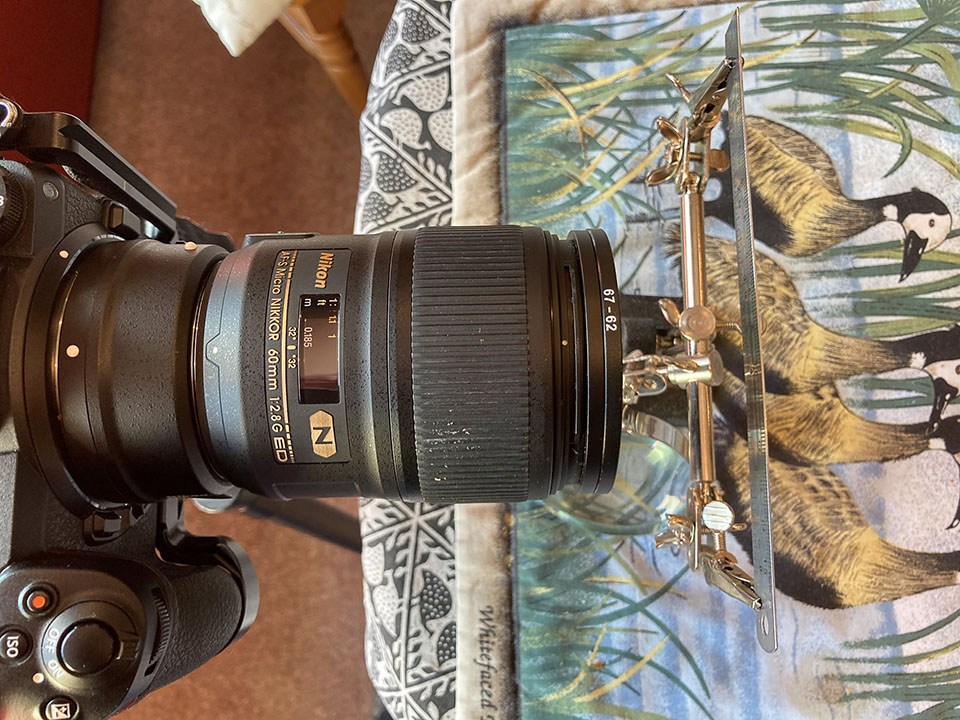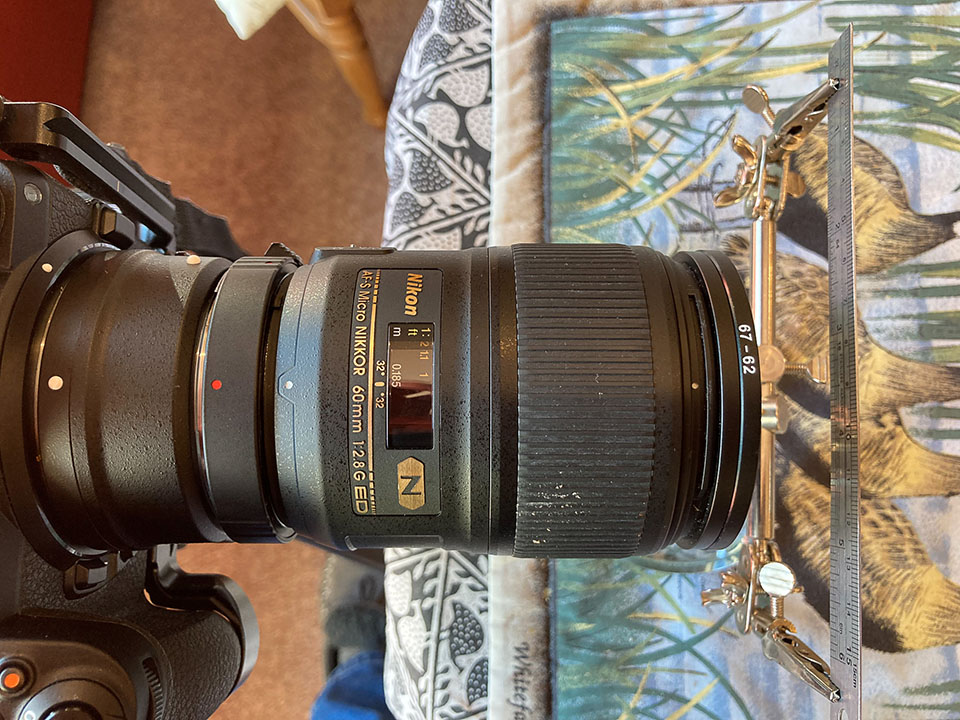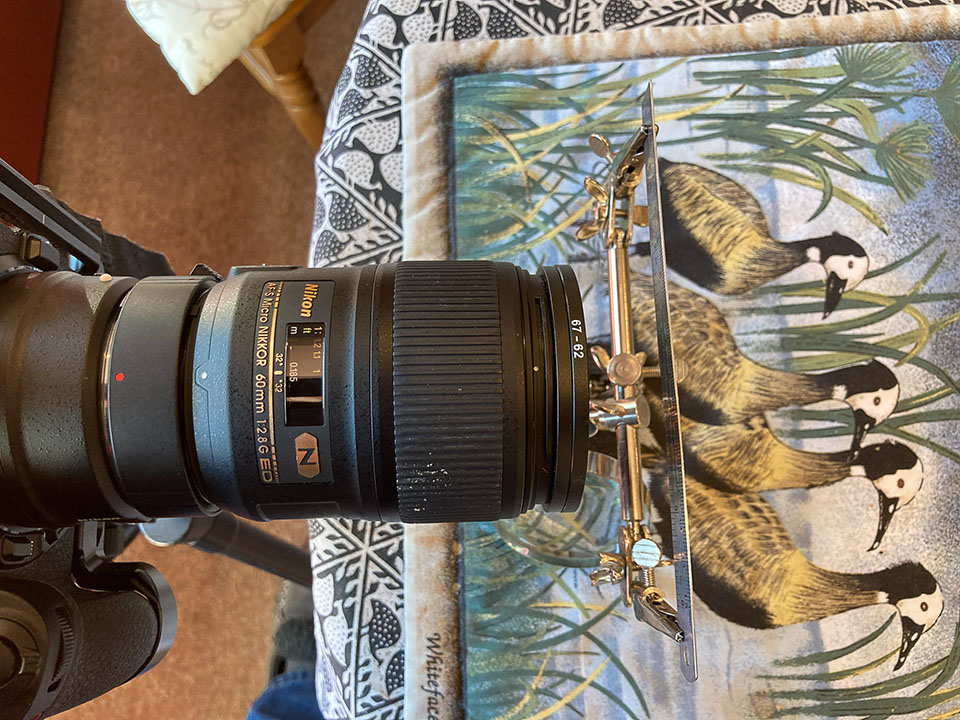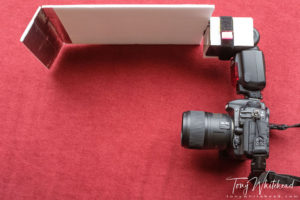Having recently added the Nikkor Z MC 105mm f2.8 VR S to my macro equipment I was interested to investigate the reproduction ratios I have available with this lens and my Micro Nikkor 60mm f2.8G lens that I use with Kenko extension tubes. By definition a true macro lens needs to achieve at a 1:1 ratio with the size of the image projected onto the sensor being the same size as the object being photographed ( a 1cm object would create a 1cm image on the sensor – sensor size being irrelevant). A web search gave me a formula for magnification of extension distance divided by focal length and an easy to use online calculator gave calculated ratios. This suggested that, when using the 60mm lens, I would be getting 1.2:1 with the 12mm extension tube, 1.33:1 with the 20mm and 1.6:1 with the 36mm tube. My gut feeling was that I was getting more magnification than this calculation suggested.
For my own edification I assembled a quick test set-up with a ruler held in a clamp and the camera mounted on a macro rail. With the lens at its closest focus setting I moved the macro rail until focus peaking showed the ruler sharply in focus. This allowed me to measure the width of the full frame image and calculate it as a proportion of the full frame Nikon Z7 sensor which is 35.9 x23.9mm. The following images show the results.
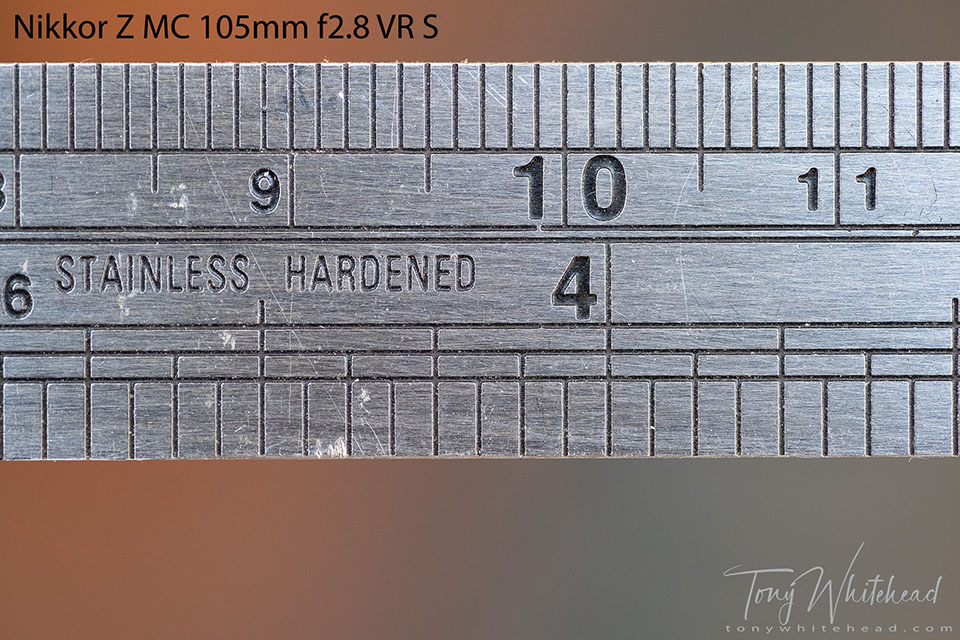
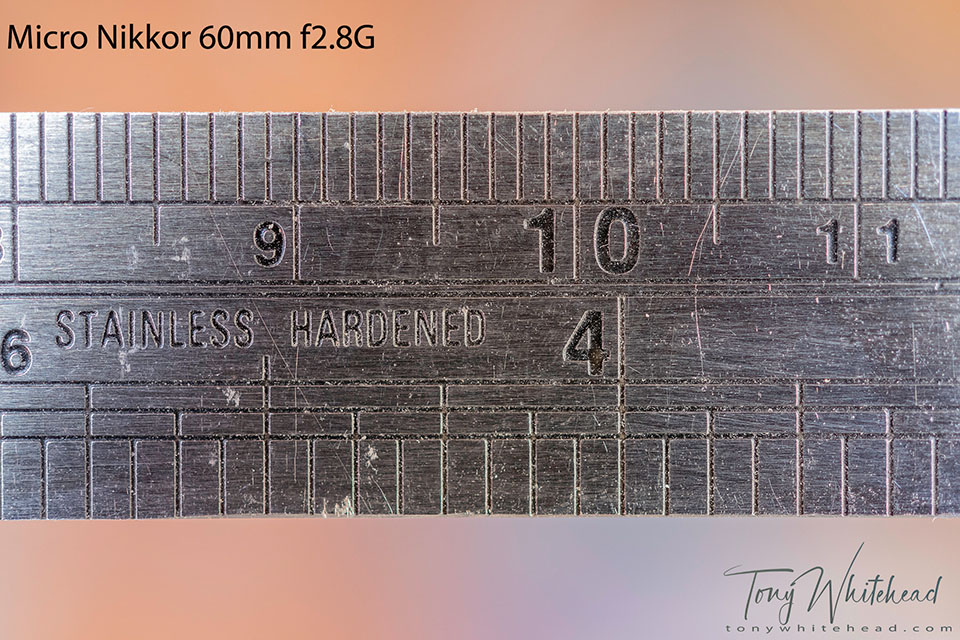
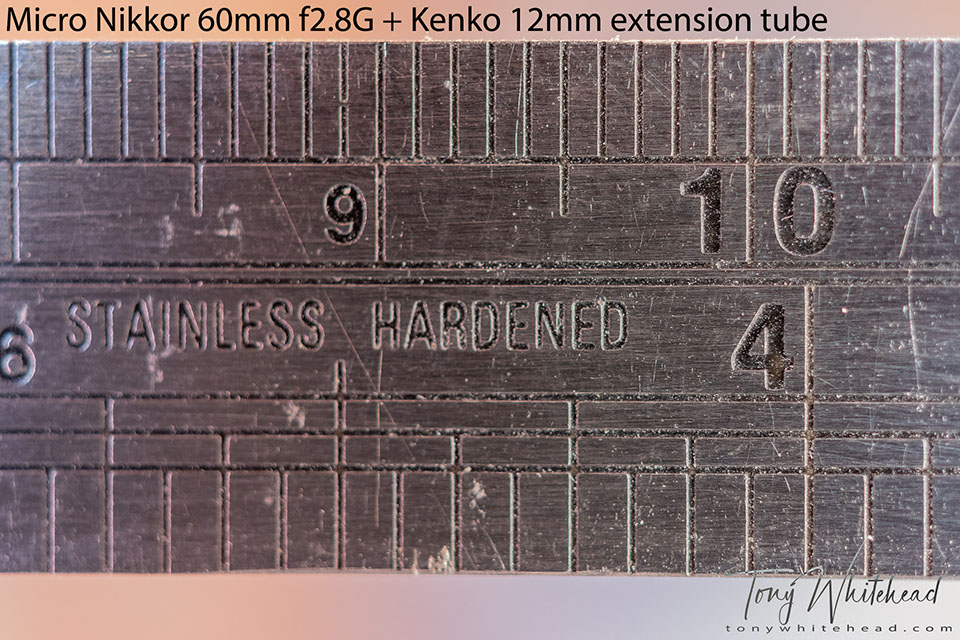
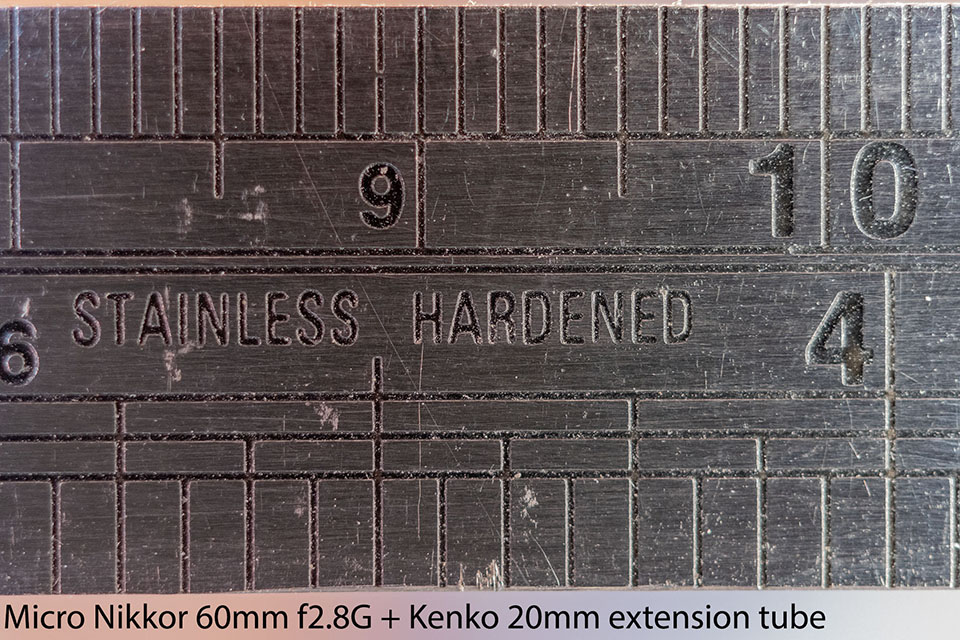
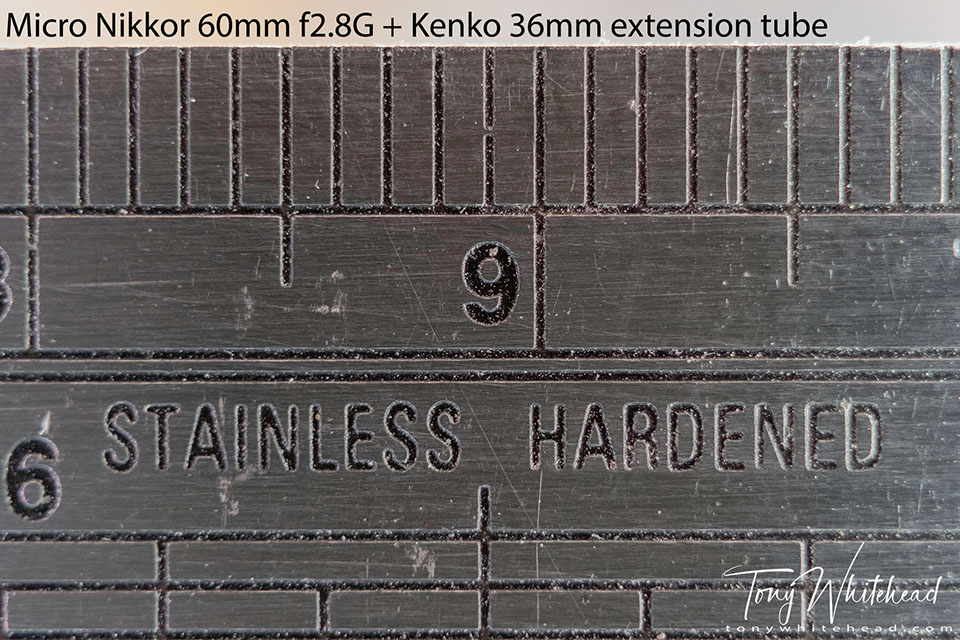
It is not clear to me why there is a discrepancy between the calculated and measured magnification ratios. Factors could be tolerances in the quoted specifications of the lens focal length and extension tube dimensions. The FTZ adaptor should not play a part as this simply creates the flange distance required for an F mount lens when used on a Z mount camera body.
Part of the issue is that the 60mm lens achieves a little more than 1:1 to start with. Extension tubes increase magnification more for shorter focal length lenses so if the nominally 60mm lens is actually in fact a shorter focal length the magnification would increase. A web search has been unsuccessful in finding a measurement for the actual focal length of the lens so I am assuming that this could be a factor.
Using a Vernier caliper I measured the extension tubes from flange to flange. The 12mm tube measured 12.8mm, the 20mm tube measured 18.5mm and the 36mm tube measured 35.3mm. Using these in the calculator with a base magnification of 1.05:1 gave values of 1.26x for the 12mm tube, 1.36x for the 20mm tube and 1.64x for the 35mm extension tube. While closer to the calculation for the 12mm tube it still doesn’t correlate with the measured values. I have to assume that the Micro Nikkor 60mm is in fact a shorter actual focal length but even calculating with a focal lenght of 50mm doesn’t achieve results with magnifications as high as measured so I am at a bit of a loss to explain my results.
In reality the exact magnification is not important but it is nice to know that with the kit I have I can achieve a magnification of close to twice life-size. I have a set of 2 extension tubes for the Nikon Z mount on order to trial with the 105mm but being a longer focal length lens this will not achieve the same magnification as the 60mm lens. I may post an update once I have these to test.
The other difference between the 2 lenses that I use is the working distance as I wrote in my Nikkor Z MC 105mm VR S first impressions post. The difference is quite significant so I took some quick photos with my phone while doing the magnification tests. These are not great quality images as the background is distracting and I have 2 stepping rings on the front of the lenses, but give an idea of how far from the front of the lens the subject is at closest focus.
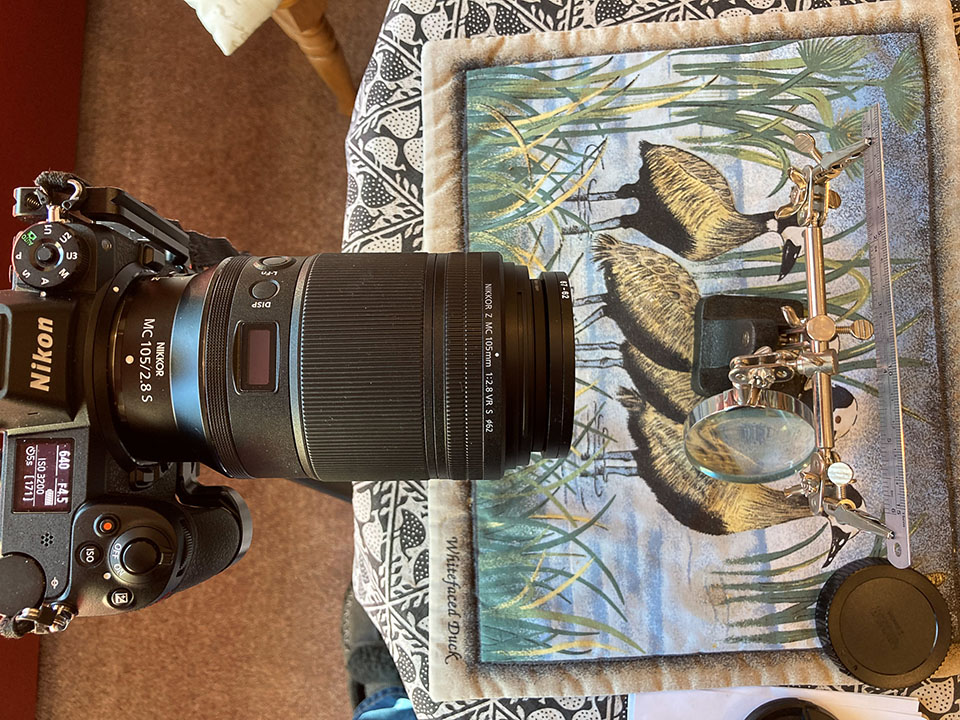
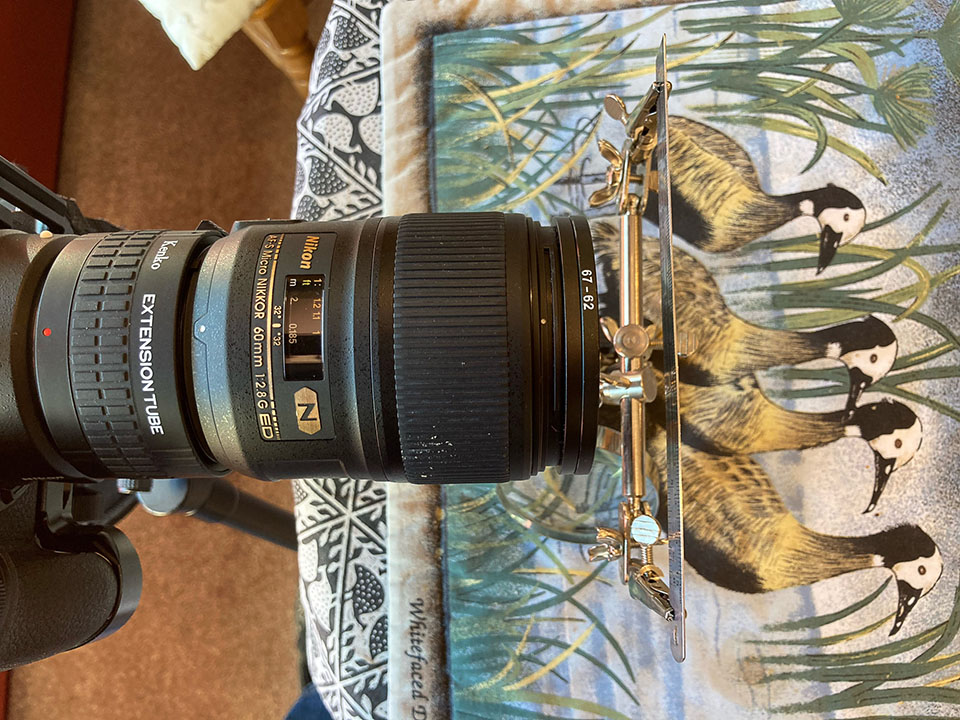
The short working distance at higher magnifications highlights the challenge of getting good quality light onto the subject.
If you have any suggestions to explain the discrepancy between calculated and measured values please comment.
